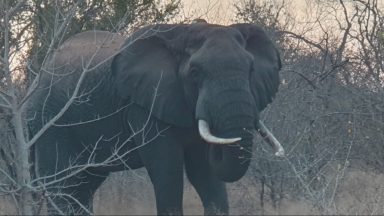Peace Parks Foundation works to protect and manage transboundary parks in Southern Africa. These are made up of separate protected areas, often covering over a million hectares. Interconnected migratory corridors within these transboundary ecosystems allow wildlife to revive their ancient migration routes and roam freely.
Lions are a keystone species (one that is critical to the functioning of an ecosystem) and are a great indicator for determining the health of an ecosystem. To monitor the movements and distribution of lions and learn as much as possible about them, park managers and conservationists use satellite tracking collars. As soon as a new pride of lions moves into a protected area, it is vital to collar a lion, not only for research but for safety and security too, so that teams on the ground can pre-empt their movement and avoid conflict with humans. Lions in Limpopo National Park do come into conflict with livestock farmers and wander into areas where poachers are known to operate. Avoiding conflict can prevent damage to property and life-threatening situations for both people and wildlife.
Historically, lions in Limpopo National Park have been notoriously skittish due to conflict with humans, which makes them difficult to track down. In one case, it took almost 18 months to collar a lion that had been identified in the central parts of the park. This time around, the pride was spotted tracking in the southern section of the park, close to local communities, making it urgent for the lions to be collared as quickly as possible.
Once this pride of lions was first located in early May, a joint operation was mobilised between the Mozambique Administration for Conservation Areas, Peace Parks Foundation, the Endangered Wildlife Trust (EWT), the Lion Recovery Fund, and the Mozambican Wildlife Alliance (MWA) to arrange an operation to collar one of the lions.
Despite previous lion-collaring operations being incredibly tricky to complete, this time around, the dedicated collaboration meant that it took just six days from first identification to the collaring operation night. As this pride had migrated from the busier neighbouring Kruger National Park and had fewer threatening human encounters, they were more relaxed around the collaring teams. Using professional and safe collaring techniques, a satellite tracking collar was successfully fitted and a DNA sample was taken from one of the lions.
Great strides have been made to rewild Limpopo National Park, and Peace Parks Foundation and together with their committed partners are working day and night to ensure that these animals continue to thrive in this beautiful park. Show your support for the professional teams of conservationists working tirelessly to safeguard people and wildlife. Share this video and leave your words of encouragement in the comments below!

